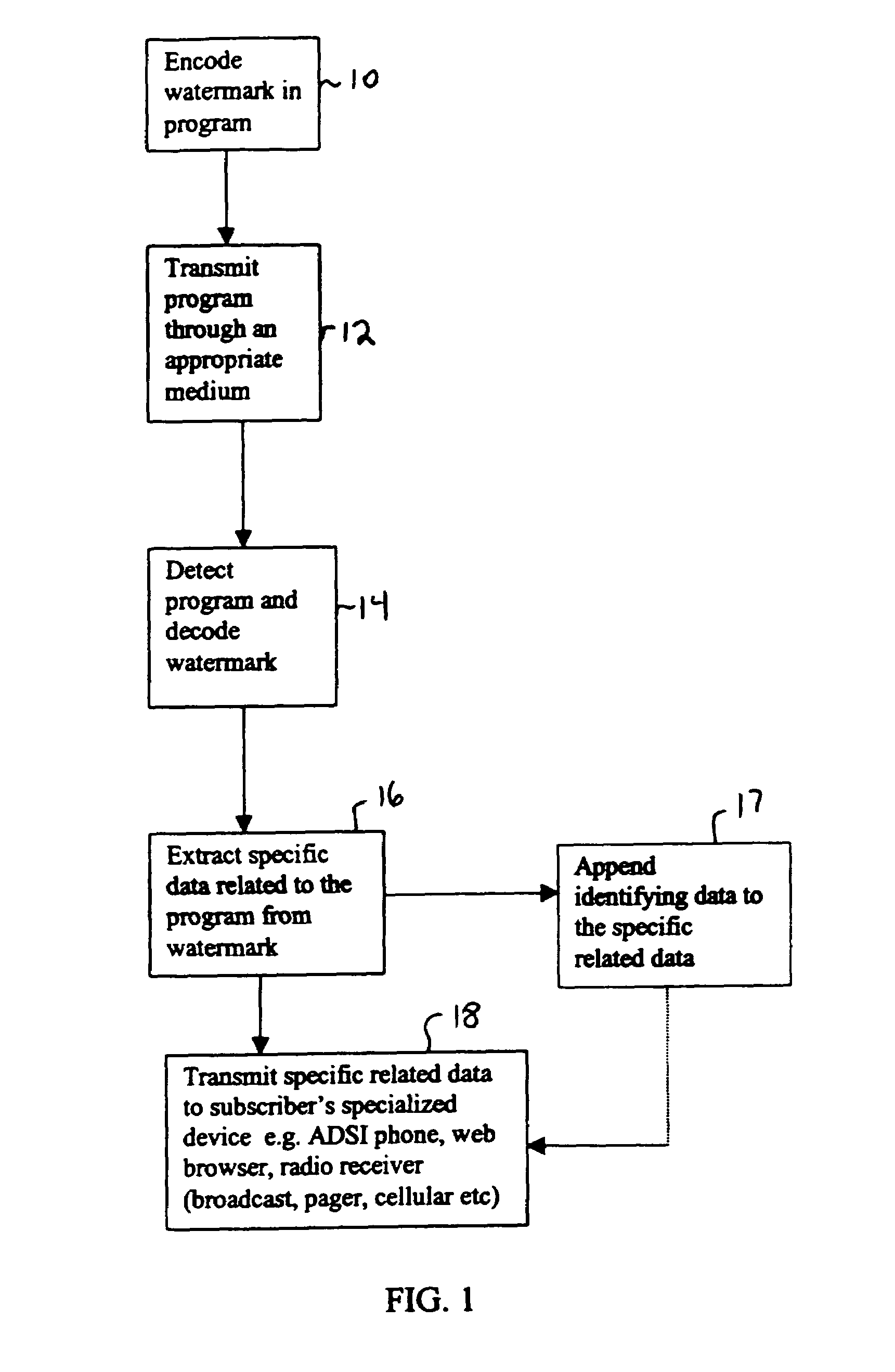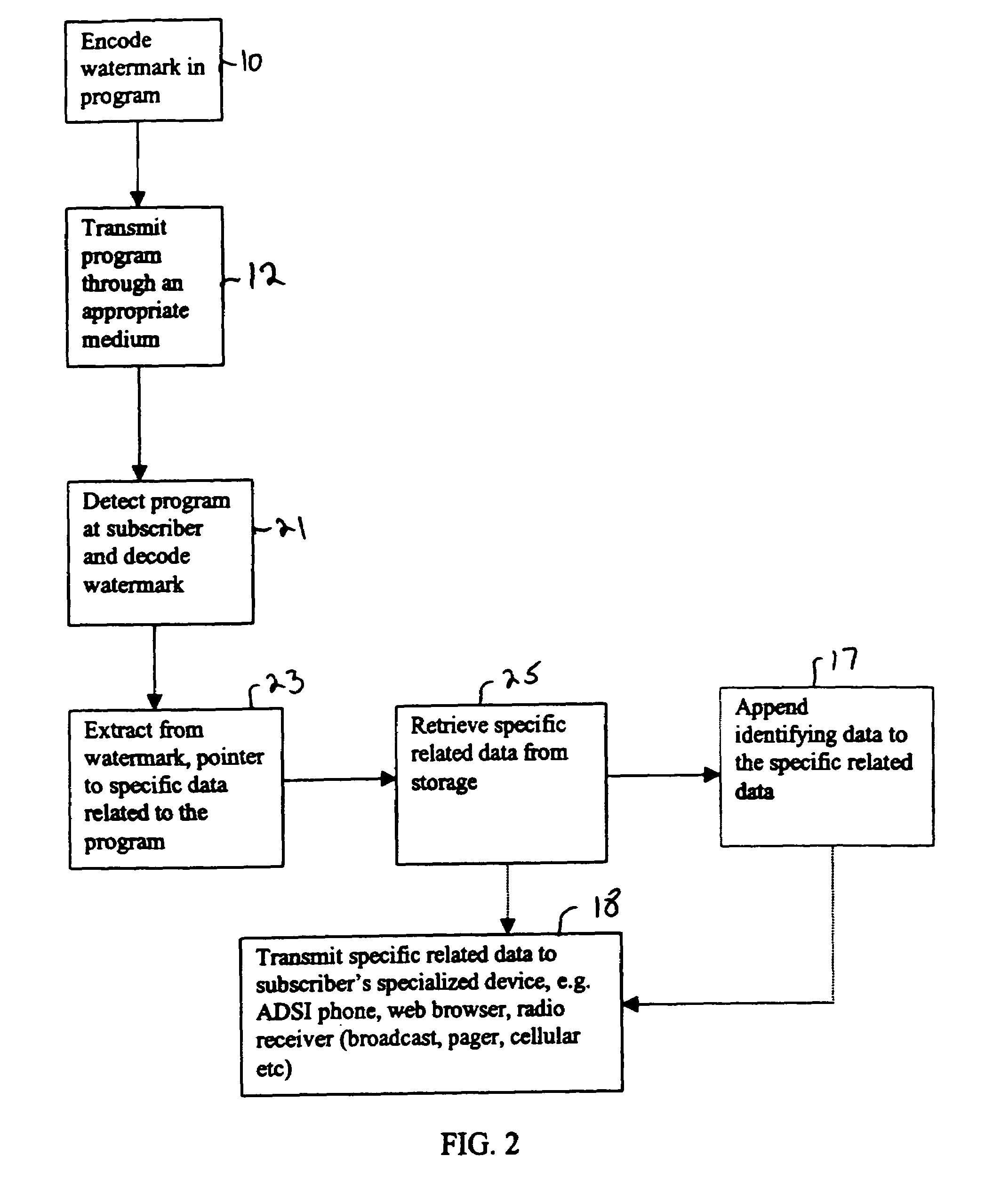Method and system for capture of location specific media related information and delivery through communications network
a technology of location specific media and communication network, applied in the field of method and system for capturing location specific media related information and delivery through communications network, can solve the problems of delivering mixed media content, affecting the delivery of mixed media content,
- Summary
- Abstract
- Description
- Claims
- Application Information
AI Technical Summary
Benefits of technology
Problems solved by technology
Method used
Image
Examples
Embodiment Construction
[0017]Referring to FIG. 1, the method of the present invention begins with embedding a watermark in a principal program, block 10. While it does not matter who embeds the watermark, this task may be performed by a content provider such as a producer, or owner of a television program. It may be performed by a broadcaster such as a TV or radio network station. It may even be performed by a re-broadcaster such as a cable operator.
[0018]The watermark is an electrical signal encoded within the signal of the transmitted program, but which is imperceptible to the human eye or ear. Various encoding schemes have been proposed in the art and may be used in accordance with the present invention. One such method for embedding an imperceptible watermark in a program is described in U.S. Pat. No. 5,929,920, entitled “System and Method for Encoding Digital Information in a Television Signal, to Theodore Sizer II and commonly assigned with the present invention, hereby incorporated by reference as ...
PUM
 Login to View More
Login to View More Abstract
Description
Claims
Application Information
 Login to View More
Login to View More - R&D
- Intellectual Property
- Life Sciences
- Materials
- Tech Scout
- Unparalleled Data Quality
- Higher Quality Content
- 60% Fewer Hallucinations
Browse by: Latest US Patents, China's latest patents, Technical Efficacy Thesaurus, Application Domain, Technology Topic, Popular Technical Reports.
© 2025 PatSnap. All rights reserved.Legal|Privacy policy|Modern Slavery Act Transparency Statement|Sitemap|About US| Contact US: help@patsnap.com



